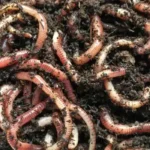It’s no secret that the world is filled with a vast array of diseases, some more common than others. But there are also a handful of rare diseases that you may have never heard of.At the lower end of the spectrum, some ailments are so rare that they affect only a few people in the world. These rare diseases can be devastating to those who suffer from them, and with so few patients, researchers and doctors have a hard time finding cures. From genetic mutations to bacterial infections, these 10 rare diseases are some of the strangest and most mysterious ailments known to science.
10- Morgellons Disease

Photo Credit: Medical News Today
Morgellons Disease is a rare, controversial and poorly understood disorder characterized by crawling, biting and stinging sensations on the skin and the emergence of colorful fibers and other particles out of the skin. It is often accompanied by fatigue, joint and muscle pain, and problems with concentration and short-term memory. Although not officially recognized as a medical disorder, many medical professionals believe that Morgellons Disease is a physical disorder with a strong psychological component. There are various theories as to what causes Morgellons Disease, including fungal infections, genetic mutation, exposure to environmental toxins, and psychological disturbances. Treatment typically involves a combination of medications, lifestyle changes, and supportive counseling.
9- Hutchinson-Gilford Progeria Syndrome
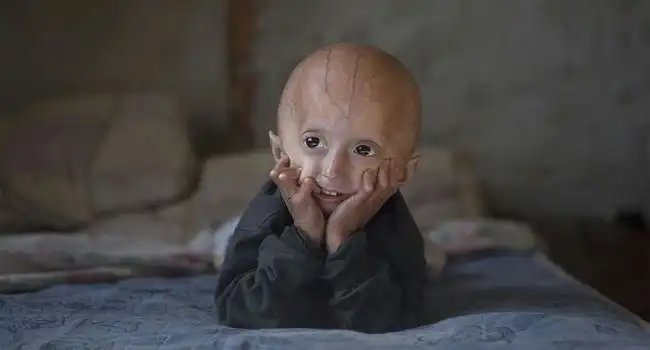
Photo Credit: Science
Hutchinson-Gilford Progeria Syndrome (HGPS) is a rare, fatal genetic disorder characterized by the rapid aging of children, beginning at around 18-24 months of age. Children with HGPS experience many of the signs of premature aging, such as hair loss, wrinkled skin, and joint stiffness, as well as cardiovascular issues, including heart attack and stroke. Although the exact cause of HGPS is not known, it is believed to be related to a gene mutation. Treatment typically involves supportive care, such as physical therapy, diet modification, and medications to help manage symptoms.
8- Fibrodysplasia Ossificans Progressiva

Photo Credit: Newsweek
Fibrodysplasia Ossificans Progressiva (FOP) is one of the rare diseases, genetic disorder characterized by the abnormal formation of bone in muscles, tendons, and ligaments. This progressive disorder causes the body to progressively replace soft tissue with bone, leading to a process known as heterotopic ossification. FOP affects 1 in 2 million people worldwide and is caused by a mutation on the body’s ACVR1 gene.
Symptoms of FOP include the presence of a uniquely identifiable extra toe or finger in the womb, as well as the formation of painful swellings in the neck, shoulders, and back. As the disorder progresses, individuals may experience difficulty in moving due to the abnormal bone formation. The excessive bone growth can also restrict breathing and cause breathing difficulty.
7- Kuru

Kuru is one of the rare diseases and a neurological disorder caused by the consumption of human brains. It is most commonly associated with the Fore people of Papua New Guinea, who acquired the prion from ritualistic cannibalism. Symptoms of Kuru typically develop between one and five years after exposure and include unsteady gait, tremors, and difficulty speaking and swallowing. As the disease progresses, the patient may experience dementia, difficulty controlling voluntary movements, and eventually death.
Although the practice of ritualistic cannibalism among the Fore people has ceased. Kuru continues to be studied by medical professionals as it offers insight into prion diseases and their transmission. Current research focuses on understanding the genetic basis for Kuru susceptibility, as well as the physical and biochemical properties of the prion that causes the disease. There is no known cure for Kuru, but treatments are available to manage symptoms and reduce the risk of transmission.
6- Alien Hand Syndrome

Alien hand syndrome (AHS) is a neurological disorder that causes one of the sufferer’s hands to move involuntarily and seemingly of its own accord. It is estimated that up to 40% of individuals who have had a corpus callosotomy to treat intractable epilepsy or a rare form of dementia called frontotemporal dementia suffer from AHS.
AHS is a neurological disorder that causes one hand to act autonomously from the sufferer’s conscious will. The involuntary movements can range from simple finger twitches to complex activities such as turning doorknobs and buttoning shirts. The affected hand may even grab or hit at objects or people, or perform other gestures that the sufferer does not want it to do. In some cases, the affected hand can even seem to have an intention of its own, as if it has a mind of its own.
5- Creutzfeldt-Jakob Disease
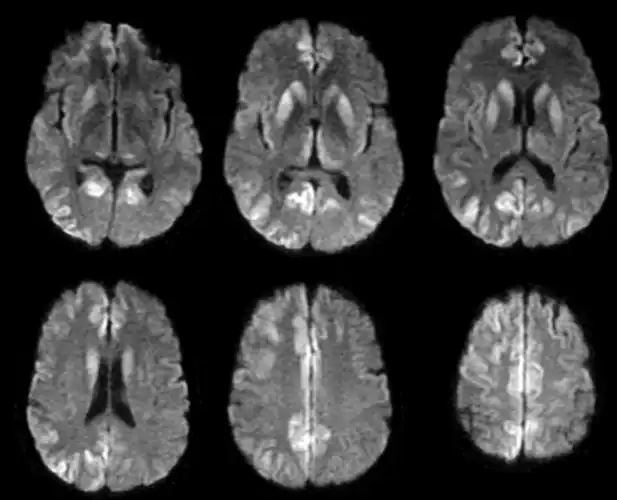
Photo Credit: Case Western Reserve
Creutzfeldt-Jakob Disease (CJD) is a rare, fatal degenerative brain disorder. It belongs to a group of diseases known as transmissible spongiform encephalopathies (TSEs). CJD is the most common form of TSEs. The disease occurs when an abnormal type of protein called prion that accumulates in the brain, causing progressive damage. Prions are misfolded proteins that can spread from one person to another or from animal to human.
CJD is a progressive, degenerative disorder that affects the brain and spinal cord. A person with CJD has a rapid progressive dementia, ataxia (lack of muscle coordination), and myoclonus (involuntary muscle jerks). Other symptoms can include impaired vision, changes in behavior, and difficulty speaking. The disease is fatal and there is no cure. The most common form of CJD is sporadic CJD, which accounts for 85% of cases. It is not hierarchal and the cause is unknown. The other 15% of CJD cases are inherited, meaning the disease is passed down from the parents to their children. There is no treatment for CJD, and the disease is fatal.
4- Proteus Syndrome
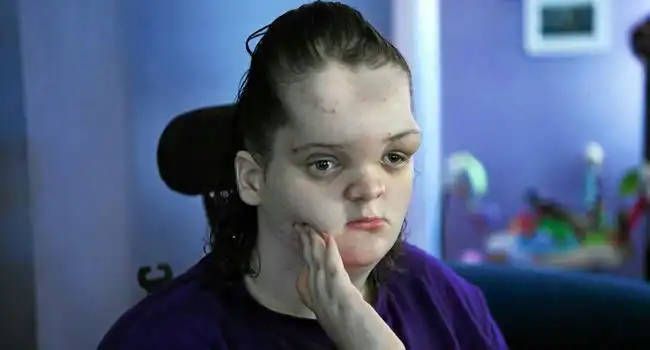
Photo Credit: Couriermail
Proteus Syndrome is a rare genetic disorder that is characterized by overgrowth of tissues in the body. It is a progressive disorder that typically begins in early childhood and can cause a variety of physical and psychological symptoms. The disorder occurs from a mutation in the AKT1 gene, which is responsible for the regulation of cell growth and death. The mutation causes cells to grow faster than normal, leading to the growth of disorganized and abnormal tissues.
The symptoms of Proteus Syndrome can vary from person to person. It typically includes overgrowth in different parts of the body, such as the head, hands, feet, and face. Other symptoms may include asymmetrical body parts, skeletal abnormalities, and benign tumors. Some people with Proteus Syndrome may also experience seizures, learning disabilities, and psychological problems.
3- Prader-Willi Syndrome
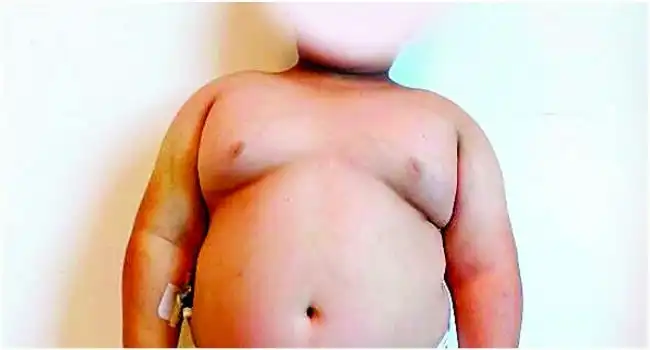
Photo Credit: DNA India
Prader-Willi Syndrome (PWS) is a genetic disorder that affects the hypothalamus, a part of the brain that controls hunger and metabolism. Anyone who has PWS has an unquenchable hunger, intellectual disability, and physical and behavioral issues. People with PWS have a hard time controlling their appetite, leading to excessive weight gain and health problems related to obesity. Intellectual disability ranges from mild to severe, with those affected having difficulty learning new skills, understanding abstract concepts, and communicating effectively. People with PWS may also experience behavioral issues, such as aggression, tantrums, and obsessive-compulsive behavior.
PWS is caused by a genetic mutation on chromosome 15, but the exact reason is still unknown. The condition is often diagnosed in early childhood and is estimated to affect 1 in 15,000-30,000 people worldwide. Treatment options for PWS include nutritional management, behavior modification, and medication.
2- Laron Syndrome

Photo Credit: NBC News
Laron Syndrome is an extremely rare genetic disorder that results in the body’s inability to properly use growth hormones. It is caused by a mutation in the growth hormone receptor gene, which results in a decrease or complete lack of growth hormone receptor activity. This in turn affects the body’s ability to grow and develop normally. People with Laron Syndrome tend to be very short in stature, and often have a bird-like facial appearance, including a prominent forehead, a beaked nose, and a receding chin. Additionally, they may have a curved spine and other skeletal abnormalities.
Other physical characteristics associated with Laron Syndrome include enlarged hands and feet, dental problems, and weak muscles. People with Laron Syndrome are also at greater risk of developing conditions affecting the heart, lungs, and kidneys.
1- Werewolf Syndrome

Photo Credit: TV9
Werewolf Syndrome is a rare genetic condition characterized by excessive hair growth over the entire body. It is also known as hypertrichosis or Ambras Syndrome. People with this condition develop thick, dark hair on their face and body that resembles the hair of a wolf. In some cases, the hair growth may even extend to the soles of the feet and palms of the hands.
The exact cause of Werewolf Syndrome is unknown. It is typically inherited in an autosomal dominant pattern. This means that only one copy of the gene mutation is necessary for a person to be affected. In rare cases, it can be caused by a new mutation. The excessive hair growth associated with Werewolf Syndrome can cause problems with a person’s physical, emotional, and social well-being. Individuals may experience a wide range of emotional issues, including low self-esteem and depression. People with Werewolf Syndrome may also have difficulty engaging in normal activities due to the physical discomfort caused by hair growth.

